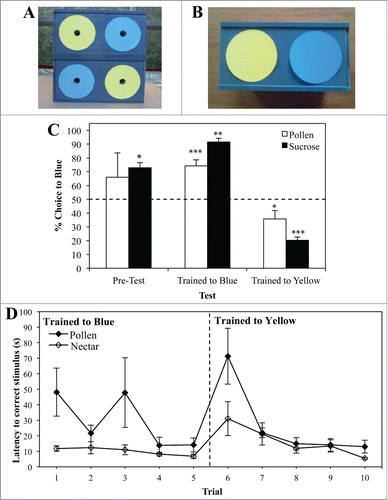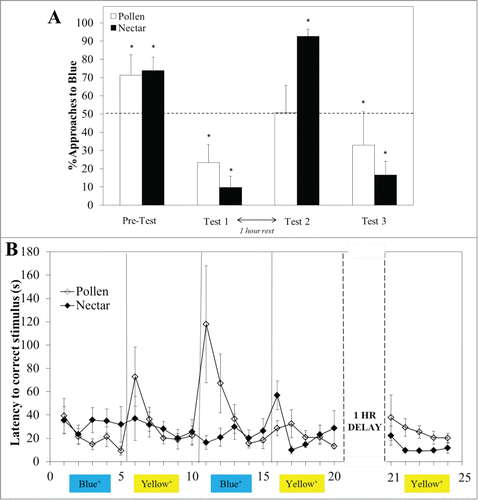Figures & data
Figure 1. Test apparatus. (A) Bees had to learn to enter the boxes via a tube positioned in the center of the correct color to access the reward. For sucrose-rewarded bees, a drop of sucrose was provided inside the entrance tubes. For the unrewarded color and sucrose-rewarded bees, the ends of the entrance tubes were covered with mesh permit the odor to diffuse out. Arrangement of the stimuli was changed after each trial. (B) Prior to and following training bees color preferences were tested in the absence of rewards.

Figure 2. Pollen (white bars, mean% approaches to blue +/− SE, N = 15) and sucrose-rewarded (black bars, N = 12) bees showed a strong preference for blue prior to training (A). The rewarded color was switched every 5 trials, for 20 trials, after which bees from both groups had a preference for Yellow, the last rewarded color (Test 1). After a one-hour rest however, pollen rewarded bees chose both colors equally (N = 6), whereas sucrose-rewarded bees (N = 6) strongly preferred Blue (Test 2). In the final bout of training to yellow, both groups preferred this color (Test 3). During each 5-trial bout, both pollen (white diamonds, mean latency +/− SE) and sucrose-rewarded bees (black diamonds) showed a reduction in search time between the first and last trial (B), though pollen-rewarded bees exhibited longer search times immediately following a color reversal.

